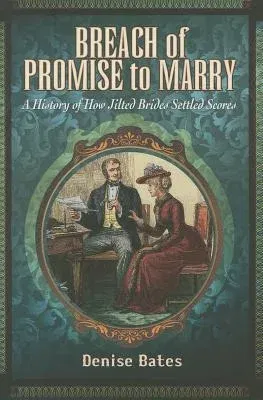Denise Bates
(Author)Breach of Promise to Marry: A History of How Jilted Brides Settled ScoresPaperback, 19 April 2014

Qty
1
Turbo
Ships in 2 - 3 days
In Stock
Free Delivery
Cash on Delivery
15 Days
Free Returns
Secure Checkout

Print Length
208 pages
Language
English
Publisher
Wharncliffe
Date Published
19 Apr 2014
ISBN-10
1783030364
ISBN-13
9781783030361
Description
Product Details
Author:
Book Format:
Paperback
Country of Origin:
GB
Date Published:
19 April 2014
Dimensions:
23.29 x
15.85 x
1.6 cm
ISBN-10:
1783030364
ISBN-13:
9781783030361
Language:
English
Pages:
208
Publisher:
Weight:
362.87 gm